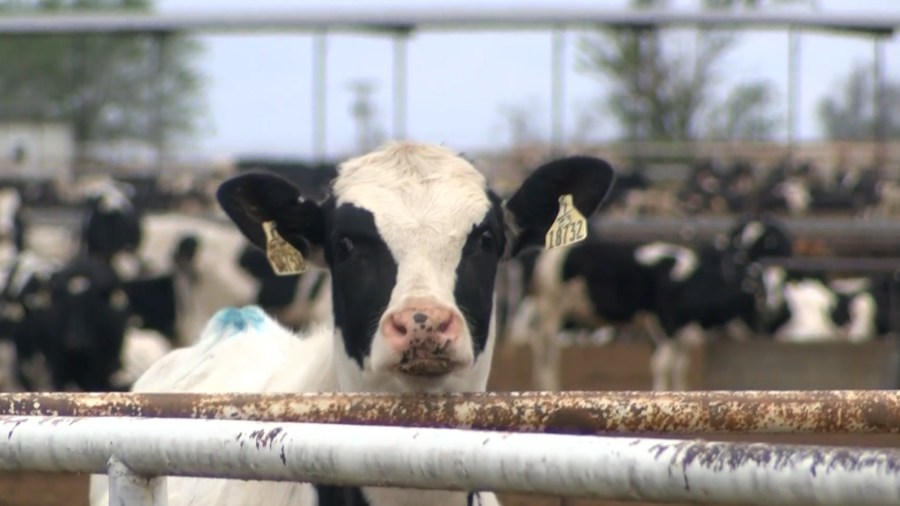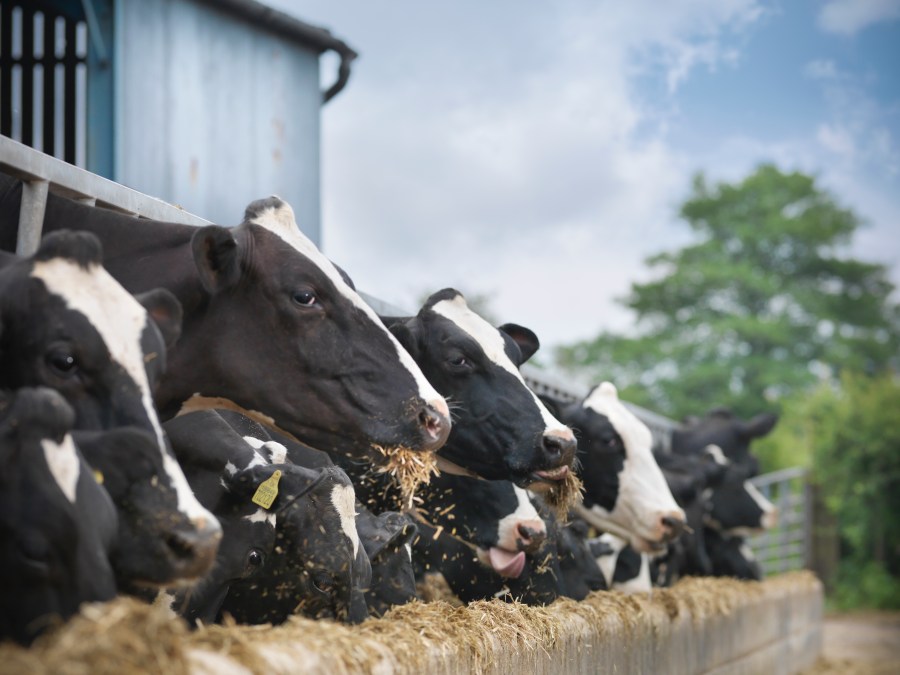Bird flu is spreading, but should you be worried?
- Over 40 cattle herds across the country have confirmed cases of bird flu
- 'Extremely rare' for the virus to spread from one human to another: CDC
- There has been three confirmed cases of bird flu in humans this year
(NewsNation) — The Centers for Disease Control and Prevention launched a wastewater tracking dashboard in an effort to monitor and stop the rapid spread of bird flu, which has been detected in cattle in nine states.
Over 68 cattle herds across the country have confirmed cases of the H5N1 virus, also called bird flu.
The CDC dashboard will track all influenza A viruses from 600 wastewater treatment sites around the country in order to help public health officials pinpoint where the viruses show up most aggressively.
Flu viruses that cause human disease circulate at very low levels during the summer months, so the presence of high levels of influenza A in wastewater during this time could be a “reliable indicator that something unusual is going on in a particular area,” news outlet STAT reported.
As of May 24, data from 689 of the agency’s wastewater sampling sites showed that an influenza A virus had been detected at higher-than-average levels in more than 280 sites, including some in Illinois and Alaska.
Concerns around the spread of bird flu have heightened as the virus becomes more widespread in dairy cows.
What is bird flu and how does it spread?
Avian influenza, commonly called bird flu, is an infection from a type of influenza virus that usually spreads in birds and other animals, according to the Cleveland Clinic.
The virus usually spreads in birds but can also infect humans if they come in contact with an infected animal’s body fluid, “like spit, respiratory droplets or feces,” the medical center said.
It can also be spread if a human breathes in small dust particles in animal habitats or gets it into their eyes, nose or mouth after touching animal body fluids. People who work with poultry, waterfowl and livestock are most vulnerable to catching the virus.
It’s “extremely rare” for the virus to spread from one human to another, according to the Cleveland Clinic.
Researchers still don’t know how the recent outbreak of bird flu spread to cattle, but the leading theory is that it has to do with milking machines that could be carrying the virus, Jenna Guthmiller, an assistant professor of immunology and microbiology at the University of Colorado School of Medicine, said in the university’s journal.
She said high levels of the virus have been found in the cows’ udders, and the infection appears restricted to dairy cows, which furthers this possibility.
“Influenza A has never been recorded like this in cows before. There’s the occasional cow infected, but they are not a natural host for influenza A viruses, so this is really quite shocking to the field,” she said.

Where have there been recent outbreaks?
Bird flu has been detected in 69 cattle herds in nine states as of May 31, according to federal data.
These states include Michigan, New Mexico, North Carolina, Kansas, Colorado, Idaho, Ohio, South Dakota and Texas.
Researchers at Stanford University and Emory University found high amounts of bird flu viral RNA in archived wastewater samples from three sites in northern Texas, STAT reported. The virus had been present at detectable levels since late February, one month before the state confirmed its first case of bird flu in cattle, the outlet reported.
Can bird flu impact humans and should I be worried?
There have been three confirmed human cases of bird flu this year: one in Texas and two in Michigan.
All three were farmworkers who had direct exposure to dairy cattle presumed to be infected with bird flu.
The first two infected people reported relatively mild symptoms, including eye inflammation, state officials said.
The last case, reported Friday in Michigan, had different symptoms, including upper respiratory problems, sore throat, cough and congestion, according to the CDC.
Dr. Nirav Shah, the CDC’s principal deputy director, said during a news briefing there’s no indication yet that the virus is spreading from person to person, although the risk does increase with respiratory symptoms.
“Simply put, someone who’s coughing may be more likely to transmit the virus than someone who has an eye infection like conjunctivitis,” he said.
The CDC is monitoring 350 people who have been exposed to infected dairy cows for flu-like symptoms. Thirty-nine people have been tested for the virus, according to agency data.
The agency says the current risk of contracting the virus to the general public is low, as these cases are rare in humans.
“Right now, the H5N1 bird flu situation remains primarily an animal health issue. However, the CDC is watching this situation closely and taking routine preparedness and prevention measures in case this virus changes to pose a greater human health risk,” the CDC said.
What are the symptoms of bird flu in humans?
According to the CDC, symptoms of bird flu in humans range from eye redness or mild flu-like upper respiratory symptoms to pneumonia, high fever, cough, sore throat, runny or stuffy nose, muscle or body aches, headaches, fatigue, and shortness of breath or difficulty breathing.
Less common signs and symptoms include diarrhea, nausea, vomiting or seizures, according to the agency.
The bird flu vaccine is made using eggs, which has concerned some medical researchers because of the prospect that wild birds could carry the virus into the henhouses needed in vaccine production.
To make raw material for an influenza vaccine, virus is grown in millions of fertilized eggs. Sometimes it doesn’t grow well, or it mutates to a degree that the vaccine product stimulates antibodies that don’t neutralize the virus — or the wild virus mutates to an extent that the vaccine doesn’t work against it.
But a new experimental mRNA vaccine developed by researchers at University of Pennsylvania’s School of Medicine could help manage the outbreak of the H5N1 virus seen in birds and cattle, and also prevent human infections.
Unlike other influenza inoculations, mRNA vaccines do not require eggs for their development.
Can bird flu get into milk and other foods?
The virus has been found in high levels in the raw unpasteurized milk of infected cows.
CDC officials warned last week that people who drink raw milk could theoretically become infected if the bird flu virus comes in contact with receptors in the nose, mouth and throat or if they inhale the virus into their lungs.
The Food and Drug Administration and the CDC both have long said that raw milk is one of the “riskiest” foods people can consume.
“Raw milk can be contaminated with harmful germs that can make you very sick,” the CDC warned.
But despite those warnings, sales of raw milk have risen.

Since March 25, when the bird flu virus was confirmed in cattle for the first time, weekly sales of raw cow’s milk have ticked up 21% to as much as 65% compared with the same periods a year ago, according to the market research firm NielsenIQ.
States have widely varying regulations regarding raw milk, with some allowing retail sales in stores and others allowing sales only at farms.
Viral remnants have been found in samples of milk sold in grocery stores, but the FDA said those products are safe to consume because pasteurization has been confirmed to kill the virus.
Bird flu is not transmissible by eating properly prepared and cooked poultry and eggs so these are safe to eat, the FDA has said.
“The chance of infected poultry or eggs entering the food chain is extremely low because of the rapid onset of symptoms in poultry as well as the safeguards USDA has in place, which include testing of flocks, and Federal inspection programs,” the agency said.
The Associated Press and NewsNation’s Cassie Buchman contributed to this story.









